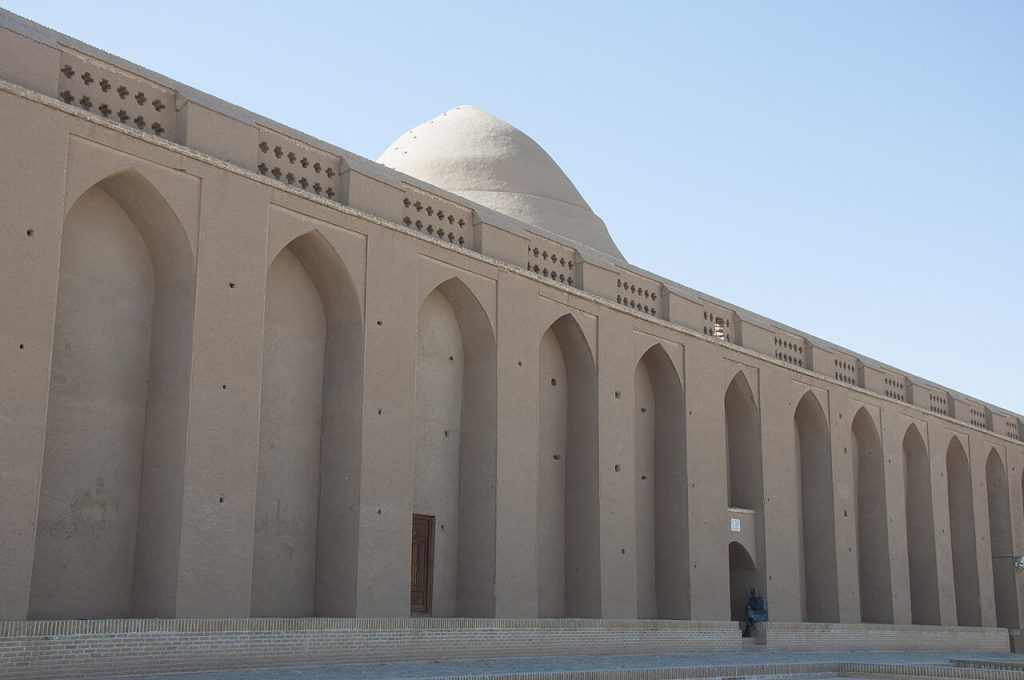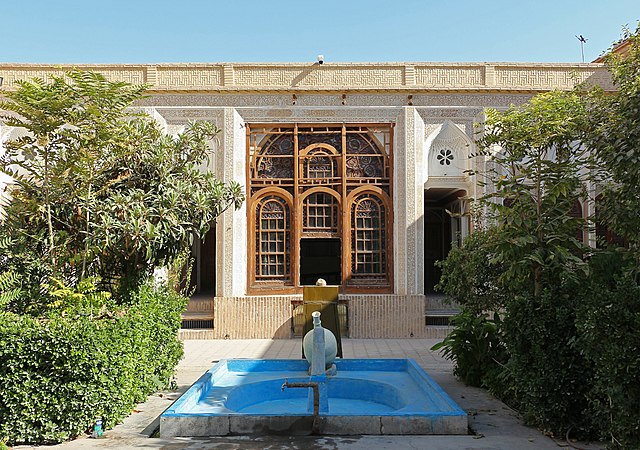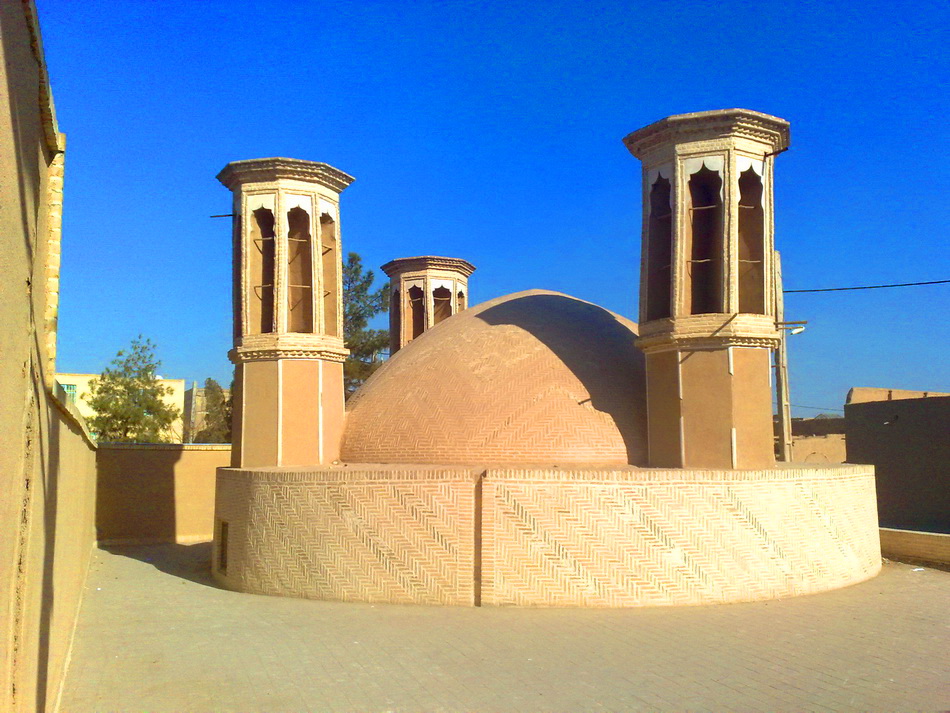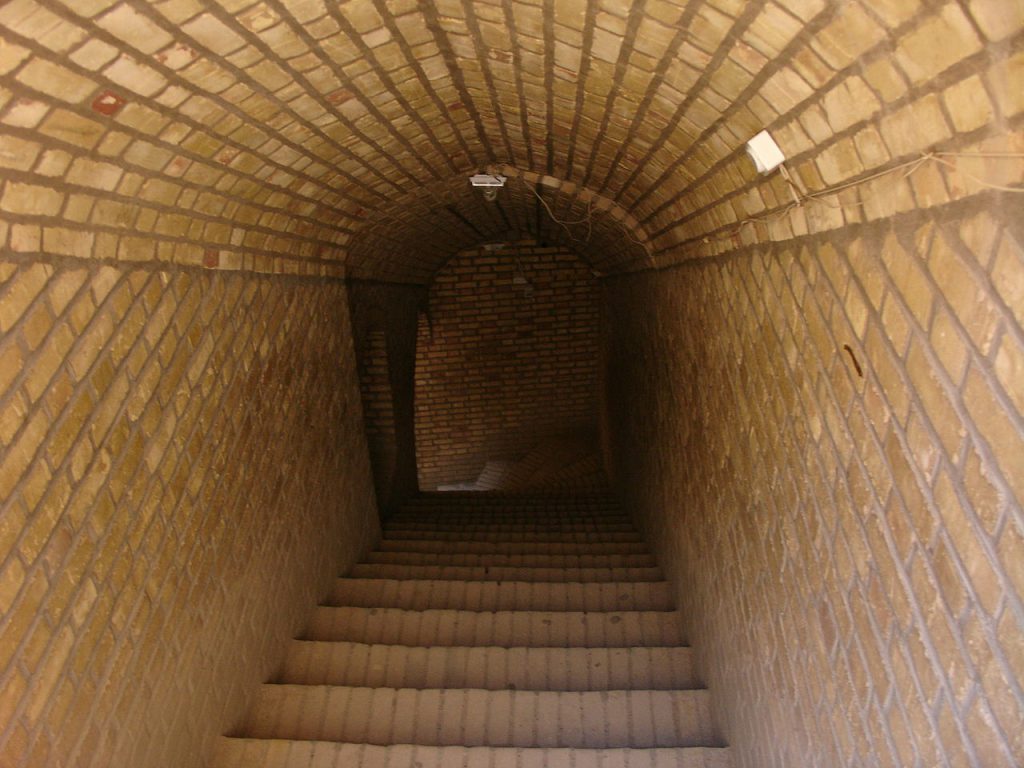Table of Contents
In Yazd province, where deserts stretch as far as the eye can see, people have come up with smart ways to store water. There are around 100 of these reservoirs scattered across the area. They’re usually right in the middle of towns and have four main parts: a hot bath, a dome, a faucet, and a wind catcher.
These Yazd water reservoirs are like hidden gems in the desert, each part playing a vital role. The hot bath, for example, is like a secret underground room that keeps the water cool. Above it, the dome acts as a shield, keeping the water clean and safe. The faucet area has stairs leading down to the water, making it easy for people to get what they need. And the wind catcher helps keep the water fresh by letting air flow through. These reservoirs aren’t just structures; they’re like protectors of Yazd’s history, showing how people have found ways to live in harmony with the desert.
Yazd Water Reservoirs History

The history of is Yazd Water Reservoirs a maze, especially when it comes to Ab Anbars, the underground water reservoirs. We’re not quite sure where they all came from, but most of the ones we see today were likely built during the Safavid and Qajar times. Take the Shesh Badgiri and Khan Bazaar anbars, for example—they were likely made during the Qajar period under Nasr al-Din’s rule. But there are loads more, about 75 to 90 of them, scattered around Yazd, each telling its own story of how people managed water through the centuries.
These reservoirs are like hidden treasures beneath the streets. Deep down, they store the city’s water, staying cool even when the sun blazes above. Up top, there’s a platform where you can draw water, and a dome that looks a bit like an ancient tower, keeping everything safe and clean. And don’t forget the wind catchers—those tall structures around the dome—they keep the air fresh so the water stays pure. Each reservoir, whether it’s a small neighborhood one or a big city center one, has its own tale to tell about how Yazd stayed hydrated and thriving.
But today, as modern ways of getting water take over, we need to find smart ways to make sure these old reservoirs, and other ancient water systems, stick around for future generations.
Yazd Water Reservoirs Structure
Amidst the Yazd Water Bath lies an intriguing reservoir structure, resembling sturdy cylinders tucked underground. These reservoirs serve a dual purpose: they provide a strategic perch for the subterranean canal’s water and maintain a pleasantly cool temperature. Topping each reservoir is a dome shaped like a half-circle, acting as a shield against environmental pollutants to keep the water pure and cool.
At the base of the faucet, a staircase-like corridor allows easy access to draw water, while wind trappers ensure air circulation, preventing water from becoming stagnant or spoiled. This thoughtful design ensures a continuous supply of fresh water while blending functionality with simplicity.
Yazd Water Museum

In the heart of Iran’s desert is Yazd, a city known for its old charm and special buildings. But among its many features, one stands out: its smart Iran water system. Because water is scarce here, the people of Yazd had to be creative to survive. That’s where the Yazd Water Museum comes in. It tells the story of how Yazd has managed its water for years. You’ll see how they built channels to bring water and made special tanks to save it. The museum keeps alive the stories of how Yazd has thrived in the desert.
When you enter the Yazd Water Museum, you step into a world where water is vital. You’ll learn about Yazd’s history through its water ways. See how they dug tunnels to move water underground and built tall towers to catch the wind and cool it down. Each exhibit tells a story of how people worked together with nature. Walking through the museum, you can’t help but admire Yazd’s cleverness and the wisdom passed down through generations.
Mansion
When you step into the Yazd Water Museum, you’re taking a journey back to the 19th century. This place used to be a big house, built during a time when people had to be smart about dealing with the hot, dry weather and saving water. The way these old houses were set up wasn’t just about looks; it was about survival. They were made to keep people cool and save as much water as possible because water was really scarce. These houses were like a mix of being comfy and being really good at saving water, all wrapped up in beautiful architecture.
The Yazd Water Museum shows off how clever people were in building houses in the desert a long time ago. These houses were more than just places to live; they were like little oases in the middle of the desert. They were designed so that even when it was super hot outside, there would still be a nice breeze blowing through. But these houses weren’t just practical; they were also really pretty, showing off the cool designs and skills of the people who built them. Every part of the museum tells stories about how people back then had to be creative to live comfortably in a tough environment.
Floors and Sections
The Yazd Water Museum is like a treasure trove of history, with each of its four floors offering something unique for visitors to explore. These floors are all connected by a staircase called Payab. Imagine wandering through a place where each level tells its own story about how people used to live.
One floor was all about keeping food and fruits safe. It’s like stepping into a time machine, feeling the hustle and bustle of people working hard to store what they needed to survive. Then there’s another floor where people probably spent a lot of time, enjoying the natural coolness of the air. It must have been a cozy spot where families gathered to relax and enjoy each other’s company.
Another floor was all about saving water, which was super important in this dry environment. People found smart ways to collect and keep water for when they needed it most. And finally, there’s a floor where you can almost smell the delicious food being cooked. This was the heart of the home, where meals were prepared and memories were made.
Each floor of the Yazd Water Museum tells a different part of the story of how people used to live. It’s like taking a journey through time, where you get to experience firsthand the challenges and triumphs of the past. So, next time you visit, take your time exploring each floor and imagine what life was like for those who came before us.
Qanats
Walk into the Yazd Water Museum, and you’re stepping back in time to discover the ancient Qanat system. The Persian Qanats, recognized by UNESCO, are incredible water systems that helped civilizations thrive in deserts. This museum celebrates the wisdom and hard work of our ancestors who found solutions to living in harsh environments. Inside, you’ll find tools, techniques, and knowledge passed down through generations, each telling a story of human resilience and ingenuity.
As you wander through the museum, you’ll see how the Persian qanats and Iran water systems were built and the clever devices used to make the most of scarce water resources. Every exhibit reveals a part of our history and reminds us of our ability to adapt and overcome challenges. The Yazd Water Museum isn’t just a collection of old things; it’s a living reminder of how our ancestors tackled problems, inspiring us to face our own with creativity and determination.
FAQs about Yazd Water Reservoirs
Q1: What are Yazd water reservoirs, and where can we find them?
A1: Yazd water reservoirs are structures in the Yazd province of Iran, spread across the desert. There are about 100 of them in different places.
Q2: What are the main parts of a Yazd water reservoir, and what do they do?
A2: A Yazd water reservoir has four main parts: a hot bath, a dome, a faucet area, and a wind catcher. Each part has its job: the hot bath cools the water, the dome protects it, the faucet area helps draw water easily, and the wind catcher keeps it fresh.
Q3: Why are Yazd water reservoirs important historically?
A3: Yazd water reservoirs have been around for a long time, likely built during ancient times in Iran. They were essential for people living in the desert to have water to drink and use.
Q4: What is the meaning of AB Anbar?
A4: An “ab anbar” (which means “cistern” in Persian) is an old-fashioned tank or container for storing drinking water in ancient times in Greater Iran.
Q5: Which country has the largest water reservoir?
A5: Brazil holds the title for the world’s biggest water storage country. It has about 12% of all the fresh water resources on the planet.
Last Words: Discover Yazd Water Reservoirs with a Customized Tour
In Yazd province’s vast deserts, people have smart ways to save water. There are about 100 reservoirs scattered around, usually in town centers. These reservoirs have four parts: a hot bath, a dome, a faucet, and a wind catcher. These Yazd water reservoirs are like hidden treasures, with each part playing a crucial role. For instance, the hot bath keeps water cool, the dome shields it, the faucet area has easy access, and the wind catcher keeps it fresh. They’re not just buildings; they’re guardians of Yazd’s history, showing how people live in harmony with the desert.
Discovering the beauty of Yazd Water Reservoirs as the traditional Iran water systems is an amazing experience, blending ancient history with natural wonders. To make the most of your trip, consider taking personalized tours. Enter To Iran Tour, your go-to for unforgettable trips in Iran, including visits to Yazd Water Reservoirs. Our team knows Iran inside out, so you can trust us to plan an amazing adventure for you. So, if you’re eager to discover the hidden treasures of Yazd Water Reservoirs and explore Iran in a whole new way, let To Iran Tour guide you.
We’re here to make sure your trip is unforgettable, leaving you with memories to cherish forever.


